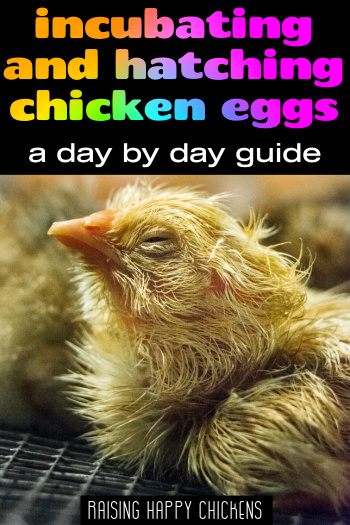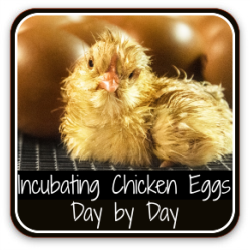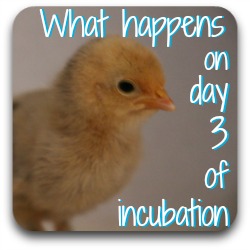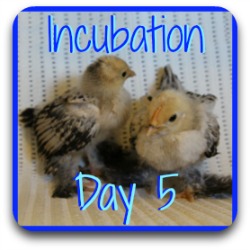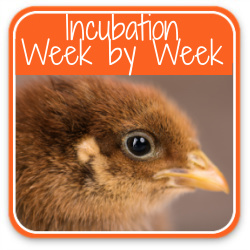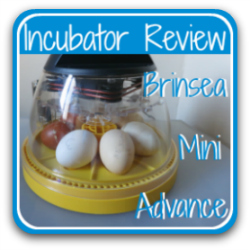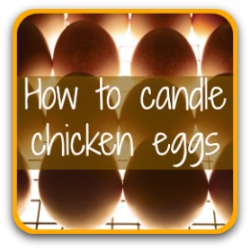- Home
- Incubation day by day
- Day 4
Incubating eggs for beginners: inside the chicken egg at day 4.
More than 90 hours into the process of incubating eggs, and our embryo is developing fast.
If we could open the egg at day 4, what would we see? What does our chick-to-be look like, and what are its needs today?
Whether you're a beginner or an expert, day 4 is always an exciting time in the incubation process.
What's going on in the egg on day 4 of incubation?
- The embryo is now large enough to be called an "embryonic disc". If we opened the egg today we'd see that disc standing proud of the yoke. If we could look at it under a microscope, we would see that it's turned onto its left side.
- It turns because its blood supply is now increasing dramatically. The vessels are critical in taking oxygen and nutrients from the yolk to the developing embryo. Without them, the chick will not continue to develop.
- If we candle eggs today, we may be able to see that developing blood supply – but every chick develops at a slightly different rate, so it's not yet a definite possibility.
Incubating eggs for beginners, day 4: what's happening to the chick?
Please note: the image below is a commissioned piece and is subject to international copyright laws. I am the sole copyright owner.
It must not be used, copied or reproduced anywhere without my permission.
Contact me for details and permissions for this and all other images on this page.
- By the end of day 4, all the organs the chick needs to sustain life when it hatches are present, though they are in the very early stages of development.
- The mouth, tongue and nasal passages start to develop today, as do all the other internal organs.
- The chick's eye is now large and very dark. By tomorrow it will usually be visible in candling.
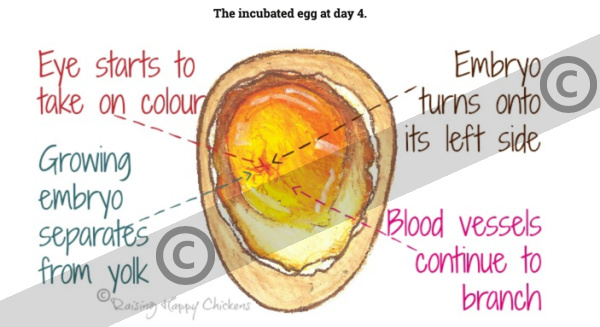
- The heart has continued to grow at such a rate that it was starting to get squashed by the body.
- In order to give it more room to develop the embryo turns so that its left hand side is lying on top of the yolk.
- The heart is not yet enclosed by the body. If you opened the egg at this point in incubation you might be able to see it beating, but it's not yet strong enough to be detected even by specialist equipment.
What can we see if we candle now?
One of the fascinating things about candling chicken eggs is that the pattern (not necessarily the rate) of growth looks remarkably similar in different eggs.
On day 4 it looks a bit like a spider, with the embryo as the spider's body and the blood vessels its legs. This will show at the blunt end of the egg.
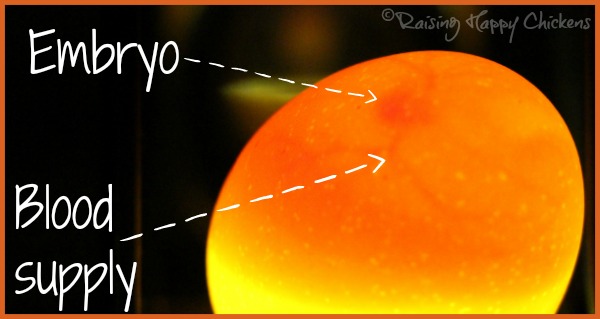
It isn't always very obvious, and it's much easier to see through white or very pale cream shells than others. If you have Marans' eggs in your incubator, for example, you won't see anything at all at this point – the eggshell is too dark and the embryo isn't clear enough.
So you can see the development more clearly, I've altered the contrast on the day 4 photo.
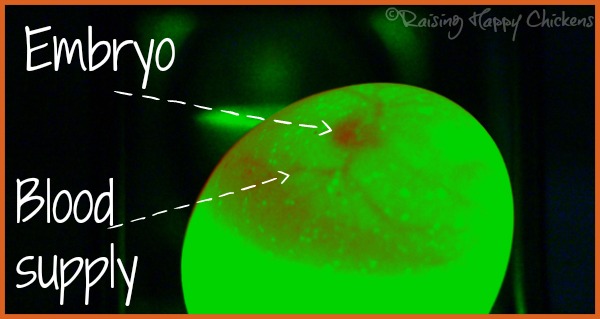
If you decide to candle your eggs at this stage, look for the "spider" at the blunt end of the egg.
But if you can't see it yet, do not panic! It's still very early in the incubation process and it may not show for another couple of days.
What should we be doing today?
I know what you'll want to be doing. Candling.
It's so tempting, particularly when you see exciting photos like the one above of those spider blood vessels.
But I'm going to suggest you wait to candle until, at the very earliest, tomorrow – day 5.
Why? For two reasons.
Firstly, because it's not always obvious at this stage whether the embryo is developing or not.
There's a danger that, if you candle now and you can't see anything, you'll panic and create unnecessary anxiety for yourself.
And secondly, because in these early stages of incubation the embryo's development is really quite fragile. Moving it unecessarily can cause it to stop developing.
So, leave your eggs where they are. Keep turning them, make sure the temperature and humidity levels are stable, and look forward to tomorrow.
Incubating eggs for beginners: learn how to candle.
If you're really desperate to do something, why not practice candling with a supermarket egg. You won't be able to see anything, but, particularly if you're a beginner in incubating eggs, it can be useful.
It will make sure you have all the equipment ready, and the more used you become to handling the egg with confidence and only for a short a time as possible, the better.
See my article about how to candle chicken eggs.
Incubating eggs for beginners: question of the day.
"The electricity supply to my incubator was cut for a couple of hours. Will the eggs be OK?"
They should be fine. A broody chicken would get off her nest for a while during the day anyway to eat and drink. Incubators like the Brinsea Mini Advance mimic this by cooling for an hour or so in each 24 hour period.
Eggs can withstand drops in temperature far better than they can deal with a rise in temperature.
If your electricity goes off for any longer than a couple of hours, keep the warmth in by covering your incubator with a blanket or quilt, leaving a gap so air can still get through. The likelihood is all will be fine.
Looking forward, looking back!
If you want to go back to the very beginning of incubating eggs for beginners, choose the first button link. For day 3, it's the middle button and if you're ready to progress to day 5, click the third button.
More pages about incubating and hatching chicken eggs.
Sources.
A lot of "facts" you'll find on the internet are often people's individual views, based on inaccurate information repeated from poor quality sources.
The information I provide in this article and others is based on both my own experience of incubating and hatching chicken eggs every year for over 13 years, but on evidenced facts from scientific, peer-reviewed research and books from highly respected and experienced poultry keepers such as Gail Damerow.
Some of the trusted sources I have used in this article are these.
Damerow, Gail: Hatching and Brooding Your Own Chicks. Pub. Storey, 2013. See my review, here.
Hamburger, V and Hamilton, H L: A series of normal stages in the development of the chick embryo'. Pub. Journal of Morphology, 1951.
Wu et al: Egg fertility and reduced egg fertility, hatching success, and larval survival. Pub. Science Direct, 2003.
Lee, B. R. et al: 'A set of stage-specific gene transcripts identified in EK stage X and HH stage 3 chick embryos'. Pub. BMC Developmental Biology, 2007.
Leonor, H., and Chaveiro, S: The Effect of Candling on the Hatchability of Eggs from Broiler Breeder Hens. Pub. Journal of Applied Poultry Research, 1993.
- Home
- Incubation day by day
- Day 4
